-
Posts
29 -
Joined
-
Last visited
Content Type
Profiles
Forums
Blogs
Gallery
Events
Store
Posts posted by RobS
-
-
Dear Community,
Nice, untouched Brunswick Waterloo medal for Heinrich Benthagen, Avantgarde. Ribbon is the original one, hard to see on my rather crappy photos, but the two lines for the blue silk stiching are still visible, sadly they have worn off. The mustard yellow silk has become really thin and fragile.
Anyway - Would anyone have the medal roll info for Heinrich?
Warm regards and all the best
Rob
1 -
On 29/04/2021 at 20:16, Claudius said:
I posted this bar some time ago. Do you need photos posted directly to this thread or will this link be sufficient?
Since the last post to the above thread, have there been any updates to the award lists that might further narrow the list of possible recipients?
Hi Claudius - this one would be interesting for us (Iron Cross Magazine). Would you be able to email me a high-res photo (front only) - if possible on a light background? robin.schaefer(AT)warnersgroup.co.uk - I will reply via email.
On 29/04/2021 at 18:01, Komtur said:Hi there, is it possible to get a higher-res version of that photo? We would like to publish this in ICM9 - Would you be able to email me a high-res photo (front only) - if possible on a light background? robin.schaefer(AT)warnersgroup.co.uk - I will reply via email. Danke!!
Hi all,
thanks for the great feedback so far, maybe it should be added that the bar photos are meant to be for publication in an article on the German state award system in Iron Cross Magazine Issue No. 9 (30 June). I would be delighted if you could email me possible bar photos to: robin.schaefer(AT)warnersgroup.co.uk - I will reply via email. Danke!!
The lovely Christophe Déruelle has already been so kind to share some photos of wonderful pieces with us, but we could still do with a few more sample bars. Photos should be high-res and please also let me know how you would like to be credited.
0 -
15 hours ago, Deruelle said:
Hi,
It seems that this officer is Hans Schneider from Artillerie Flieger Abteilung 238
For me the ribbon bar has the following ribbons :
SH3, knight cross of St Henry of Saxe
SA3aX, knight cross 1st class with X of Albert of Saxe
SA3bX, knight cross 2nd class with X of Albert of Saxe
EK2, iron cross 2nd class
PKO4, Order 4th class of the Crown of Prussia
ÖM3K, Austrian Military Merit 3rd class with war decoration
On the tunic he wore two more ribbon, one ribbon for the iron cross 2nd class and for me the ribbon of the knight cross with X of House Order of Hohenzollern.
Christophe
Hi Christophe,
this is MOST fascinating and very much appreciated. Thanks a lot! I am very grateful indeed and much impressed as well.
0 -
Fantastic piece with a wonderful, warm dedication by some very proud and loving parents.
Wunderbar.
0 -
5 minutes ago, Chris Boonzaier said:
Super Pic.... pity if he were to slip between the cracks of history...
It's not a HOH at least, Ribbon colours are wrong.
0 -
Hi - anyone with access to the regimental history of RIR81 with info on how Vzfw. Friedrich Stöcker (formerly IR112) won his Golden MVK on 17 September 1918? Any info would be appreciated!
Danke und Thank you!
0 -
-
26 minutes ago, Chris Boonzaier said:
Thanks.... mannnnnnn... another one slipped through in Ancestry.... he is not listed ?
Sure he's Bavarian? He is writing to Saarburg after all.
0 -
Auf die schnelle...
Meiner lieben, kleinen Sanni
als erstes sollst Du, mein liebes Maedel, dieses Foto erhalten zum Zeichen, dass ich noch viel an dich denke und Dich auch recht von Herzen lieb hab
------- ----- [?]
Dein Hermann
Oblt Hermann Schueckinger (mit Umlaut)
zur Zeit Bad Toelz
0 -
3 hours ago, ArHo said:
Hi, I am irritated by the very unusual form of the loop which does not seem to be a product of hasty painting. It would fit the named Nassau medal, but also the Nassau Waterloo medal - perhaps the better possibility, regarding the size (?), although the ribbon is wrong in this case, too, of course. Just my 2 cents, cheers.
Yes, the suspension loop looks square, but maybe it isnt. Size would indeed not fit. Neither would a Prussian wear a Nassau campaign medal. The Russian medal for Paris (1814) would make a LOT of sense, would fit sizewise and it came with an unusual coloured ribbon which would very, very roughly fit the artists interpretation. What do you think?
0 -
52 minutes ago, VtwinVince said:
Excellent, and quite a family connection. My 3x great grandfather was also involved in the conflict, but on the Prussian side. I once had dinner with an old family friend, and saw a portrait of a Napoleonic officer on his wall. It turned out he was a direct descendant of Marshal Graf Barclay de Tolly.
Wonderful
0 -
5 minutes ago, laurentius said:
Wasn't this bar for sale as a modern composition with original ribbons and awards? I might be mistaken but the combination seems a bit outlandish.
Kind regards, Laurentius
It is certainly an 'interesting'/'odd' combination, not quite sure how that could have come together either.
0 -
1 hour ago, VtwinVince said:
Hi Rob,
Great items, I love documentation relating to the Napoleonic period. I don't think people realise how much of the Grande Armee was composed of German contingents. One of my ancestors died in Russia whilst fighting with a Saxon unit. Your guy was extremely lucky.
My own family comes from the Rhineland Palatinate and all my ancestors in that period served in French regiments. Lost several family members in Russia, others in Spain. My own direct great x x grandfather fought at Waterloo with 56e Ligne and only returned to 'Germany' in 1821. My great x x x aunt married the Duc de Mortier (Marshall of France), Anna Maria Himmes.
 So I can always say "My uncle commanded the French Imperial Guard
So I can always say "My uncle commanded the French Imperial Guard  0
0 -
Battered, torn, stained and foxed. But both items - including the Felddienst-Auszeichnung, which has a patina black as coal - with a thick crust of age to them.This rare 'Abschied' or discharge document was handed to Andreas Schuhmann, from Vörstetten in the borough of Freyburg in the Grand Duchy of Baden in 1820.In February 1812, aged 20, Andreas had volunteered to become a soldier.When the French Revolution threatened to burn itself into the rest of Europe in 1792, Baden joined forces against France and became the frontline. Hardly able to defend itself, having an army of only 2000 men, the Duchy was in a difficult position. With the fall of the Palatinate to French troops in 1793, it was soon flooded with refugees, which made the situation even worse. In 1796, the margrave Charles Frederick, Grand Duke of Baden, was compelled to pay an indemnity and cede his territories on the left bank of the Rhine to France. Fortune, however, soon returned to his side. In 1803, largely owing to the good offices of Alexander I, emperor of Russia, he received the bishopric of Konstanz, part of the Rhenish Palatinate, and other smaller districts, together with the dignity of a prince-elector. Changing sides in 1805, he fought for Napoleon, with the result that, by the peace of Pressburg in that year, he obtained the Breisgau and other territories at the expense of the Habsburgs. In 1806, he joined the Confederation of the Rhine, declared himself a sovereign prince, became a grand duke, and received additional territory. The Baden contingent continued to fight for France, and by the Peace of Vienna in 1809, the grand duke was rewarded with accessions of territory at the expense of the Kingdom of Württemberg. Having quadrupled the area of Baden, Charles Frederick died in June 1811, and was succeeded by his grandson, Charles, Grand Duke of Baden. In February 1812 Baden raised a Corps of 7166 men to fight alongside the French in Russia.One of the men volunteering to join was Andreas Schumann, who joined the ‘elite’ rifle company of the Light Infantry Battalion. The Badeners performed all kinds of field policing duties before finally uniting with the Grande Armee in July, becoming part of IX. Korps. The Baden contingent was rated highly, many of the men had plenty of combat experience from earlier years (1806, 1807, 1809) and they were well supplied. They marched on Minsk, Smolensk and later played an important part covering the retreat of Napoleon’s Great Army across the Beresina in fierce fighting. After that the Baden brigade formed the Arrièregarde of II. Korps on its march to Vilnius.Casualties were enormous. Of the 7166 men of the Baden brigade, 537 were still present at roll call at Marienwerder on 30 December 1812. Of those only 154 were fighting troops. On 7 December 1812, the Light Infantry Battalion, in which Andreas Schumacher served, had a strength of 4 officers and 54 men. Far less than that ultimately returned home.One of them was Andreas Schumann. He continued to fight for Baden as part of the Light Battalion, which fought in the Battle of the Nations at Leipzig (again on the French side) and later in the campaigns of 1814/15 on the side of the Allies.The heavily patinated medal (lacking its suspension ring) is the Felddienst-Auszeichnung of 1840 which was issued to all veterans of the Baden Army still alive then.One of less than 154 fighting soldiers to march back from Russia to Baden in January/February.Andreas Schumann is listed in the ‘Veteranen-Chronik der Krieger Badens’ (The Baden veteran’s chronicle), published in Freiburg in 1843.He passed away in 1848.Both items saved from certain destruction from previous owner who could not read what the document said, and even if - would not have had any interest in exploring this further. They are bruised and stained, but both certainly among the most loved pieces in my collection.0
-
42 minutes ago, saxcob said:
Yes, and I have them.
However, I am afraid the gentleman on your painting is not to be found among the soldiers listed there since
1. the ribbon is not correct
2. the medal on the painting is way too smal
3. the Nassau medal was not awarded to foreign troops but only to those in the duke's serviceDo also not forget that for the bigger share of the Napoleonic Wars Prussians and Nassauers were fighting each other (incl. at Kolberg 1807) and probably only joined forces at Waterloo.
Thanks for the excellent information, As I said before, the Nassau medal wasn't on my possible list for several of those reasons. I am still seeing something Russian there. But who knows..
Thanks a lot again!
0 -
6 hours ago, Claudius said:
hmmm, I don't think it would garner a name directly, but another approach is the artist himself. You mentioned that the painting is signed and dated. Some artists are known well enough that there are details about who they were and WHERE they did most of their commissioned work. Some have catalog of their known pieces. But this pursuit would be through a different venue, perhaps a forum on 19th century painters (if there is one). They do this sort of thing on the Antiques Roadshow. The artist might be someone that is known in the art collecting community.
Good morning. The artist is know locally. But there are no records as such, he wasn't a "great name". I know that ID will be impossible. I wonder if there are award lists for the Nassau 1807 bravery medal.
0 -
Also intrigues me that the artist - who was perfectly capable to paint a face - clearly tried to depict a deformity on the gentleman's face (left side of his face). See that the mouth lacks a 'corner', there is also a scar. Had two professional artists look at this and we all agree that this has been done on purpose. War wound? If only the painting could speak.
0 -
Hi both,
the 1807 Bravery Medal (Nassau) was also awarded to foreigners, and you are right, the suspension looks very similar. The ribbon of that however was blue-yellow-blue. But I guess the artist didnt think much of ribbon colours in general. Damn I wish I could identify this gentleman.
246 awarded, also for Kolberg. Would be tempting to believe that is the one.
Danke!
0 -
Hi everyone,
this is my first post on this wonderful forum, and also a brief introduction. My name is Rob, I am a historian and (among other things) historical editor of 'Iron Cross Magazine' (Warners Publishing Plc). Personally I collect everything that sparks my interest. Mostly items that allow further research - which is probably why most of my militaria collection consists of paper and cardboard. I am very much interested in the cultural history of the Iron Cross and I am currently writing a book on the 'combat history' of the same, but I can't give too much away there atm.
I am not sure if this is the right forum, but "Imperial German States" would have been wrong. So I hope the Iron Cross sub-forum is okay (should that not be named 1813 to 1945 btw?)
I recently accquired this oil portrait via an Ebay 'trade agent' (they still exist much to my surprise) near Hanover. He was so kind to get me in touch with the old lady who asked him to sell it for her. She informed me that her father had accquired the painting shortly after WW2 from a house in Gerdau near Uelzen in Germany. It is typical 'Biedermeier' painting (in the UK you class it late late Georgian). It is dated signed and dated 1831.
As you can see it clearly shows a gentleman who served with distinction in the Wars of Liberation. It is clear however, that the artist wasn't particularly fussed about getting detail into the medal bar. This is quite common at the time, but still a bit of a pain in the bum. My question is - what would you think we see on this bar. I see:
1. Iron Cross 1813
2. KDM 1813/14/15 (impossible to say which one)
3. ???? this is a mystery - reminds me of the Russian 1814 medal for capture of Paris)
4. Dienstauszeichnung (jewellers piece, FW III)The ribbon colours are ALL not only faded (there are some faint traces of orange pigment on the KDM ribbon), they are also not very well done.
I would love to hear what the combined expertise of this forum has to offer in terms of identifiying the third medal on this bar
Warm regards, danke and have a great evening all!
Rob
0



-02-min(1).thumb.jpeg.216ee566fb5d7a36b00604640a7931ec.jpeg)
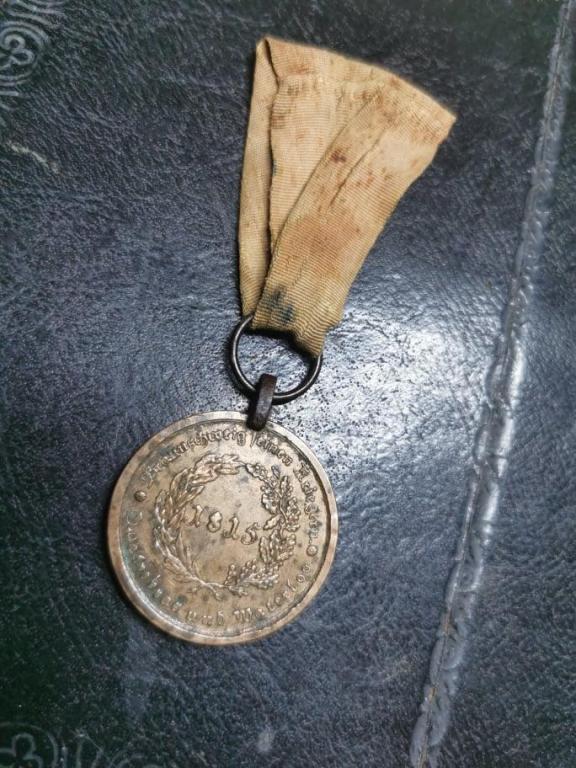

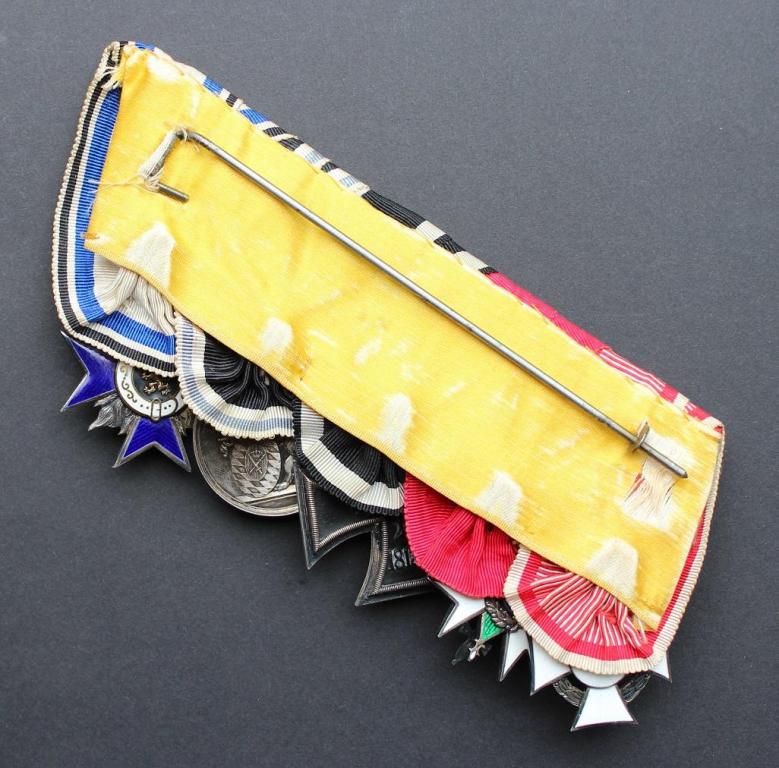
.thumb.jpg.a4001d0992acdb3540b66b7877e60e5a.jpg)
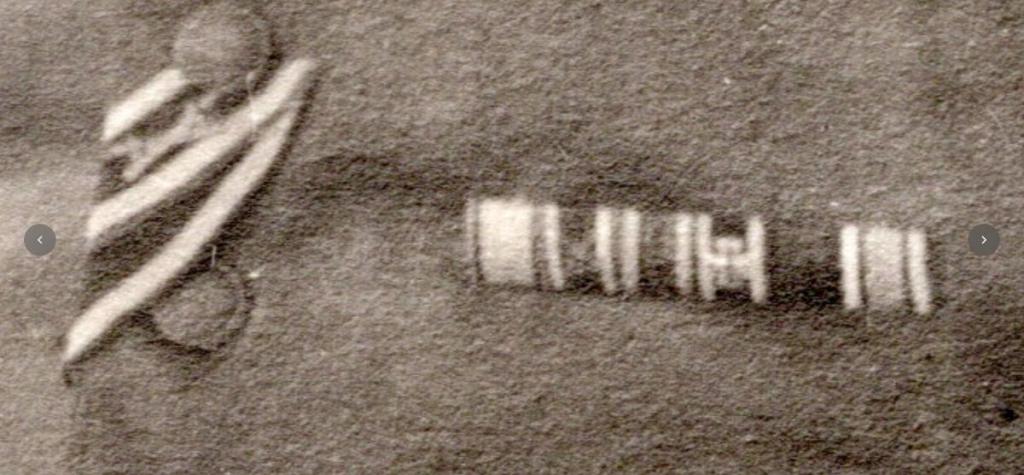
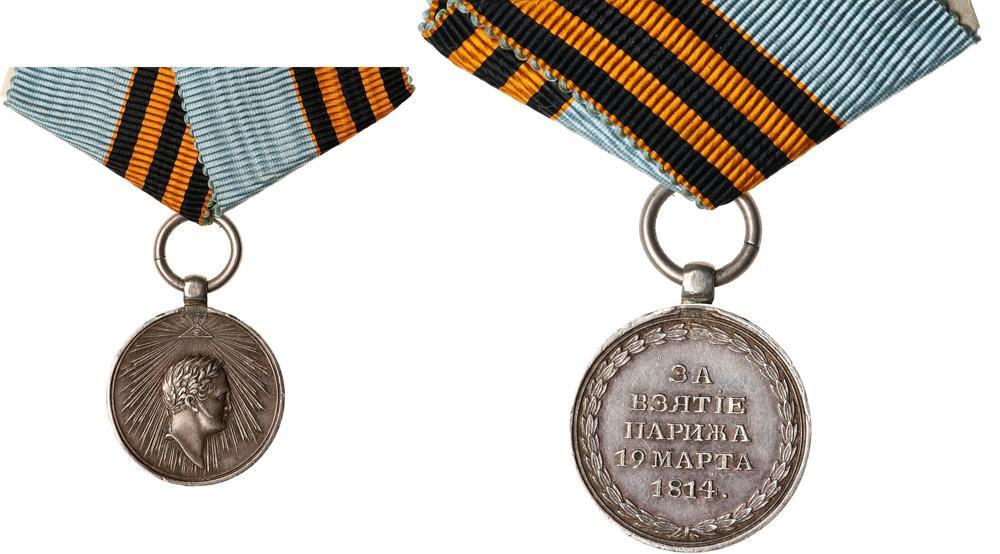
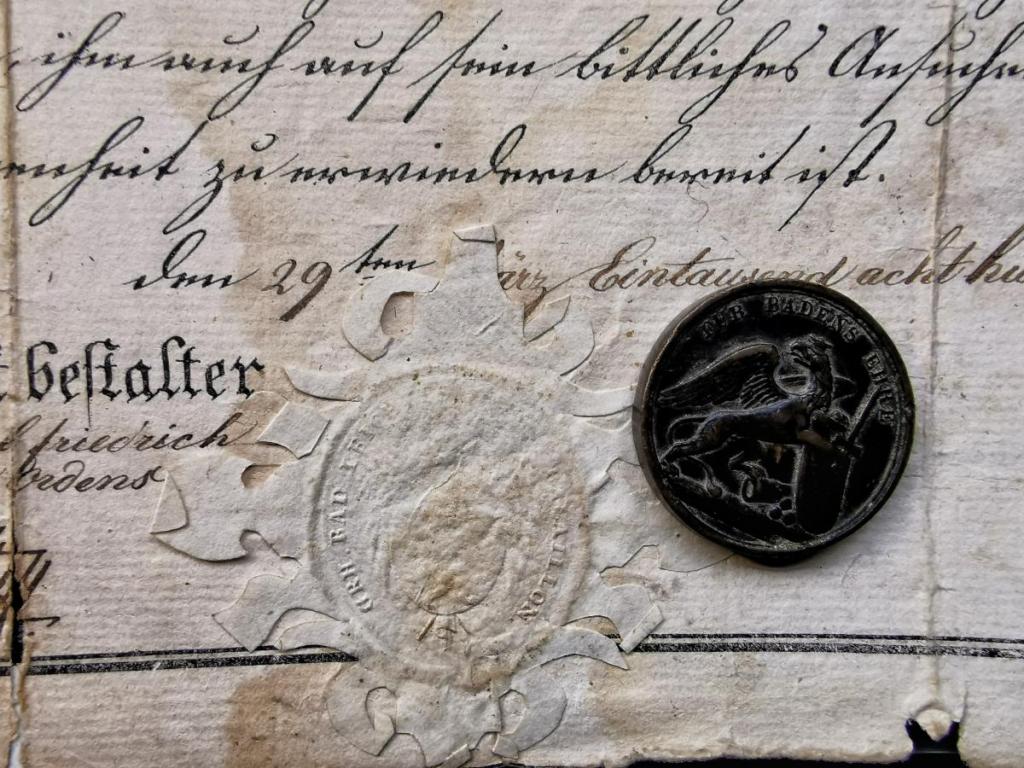

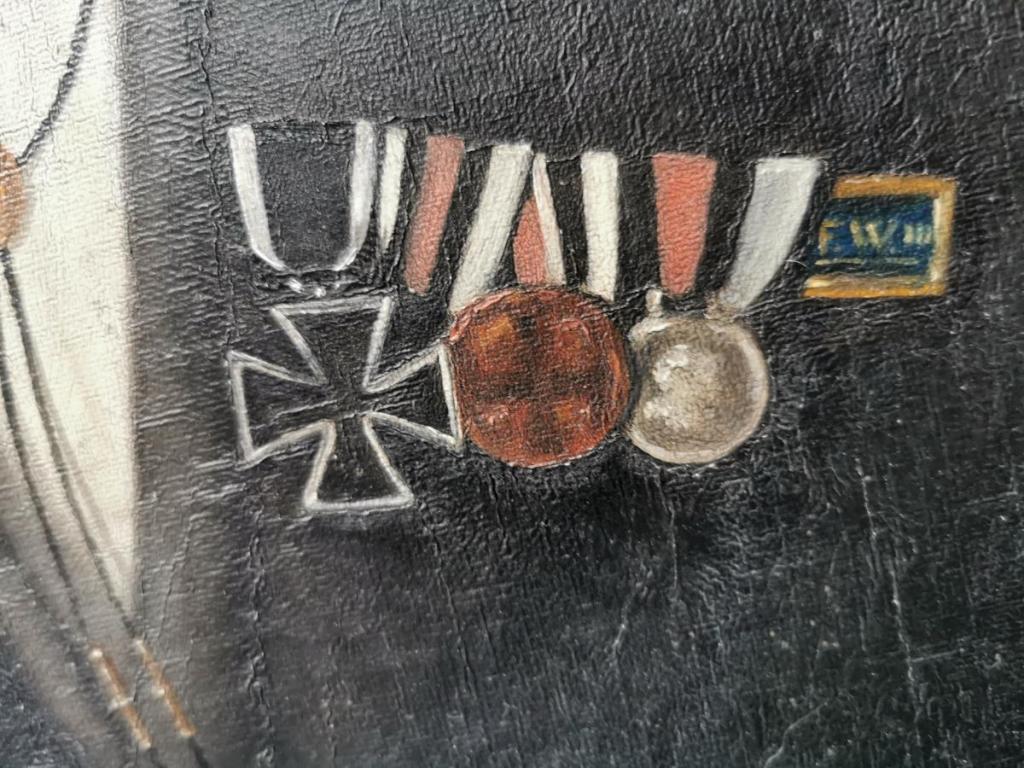
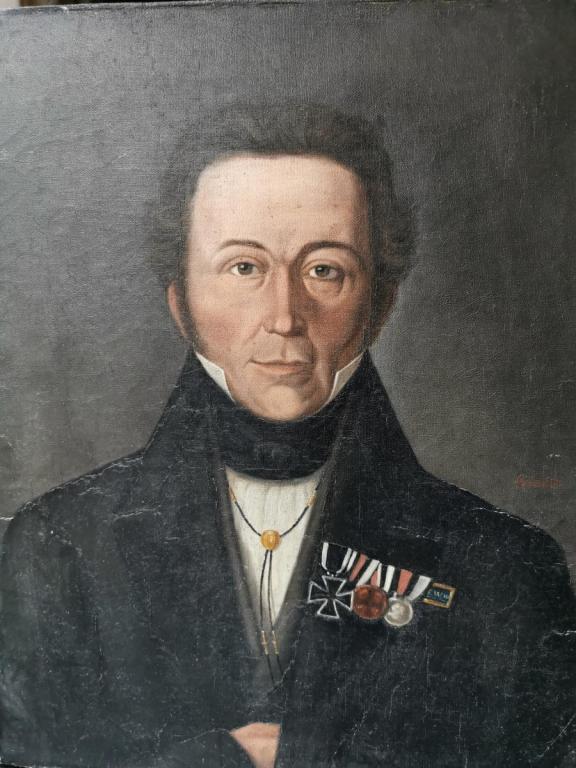
Brunswick Waterloo Medal Avantgarde - Medal Roll Info?
in Napoleonic Wars
Posted
Grossartig! Vielen, herzlichen Dank!